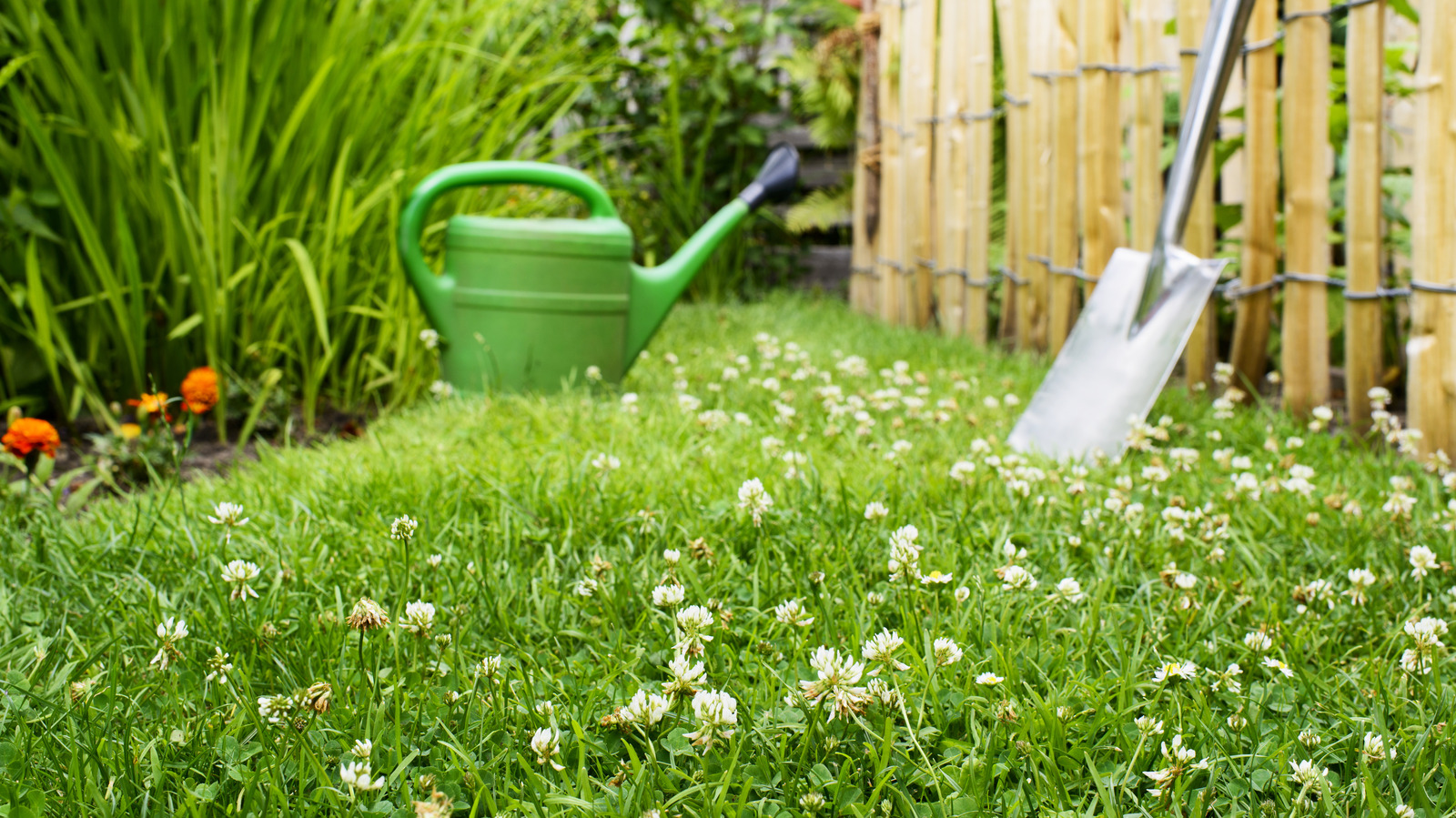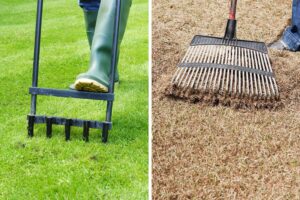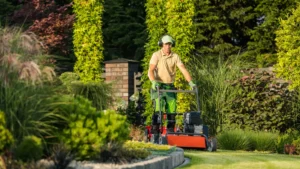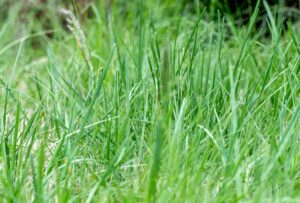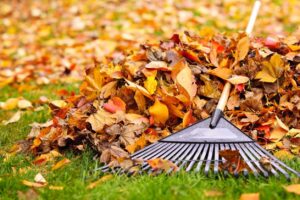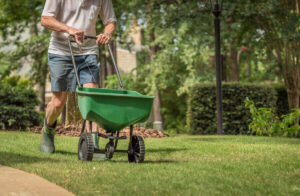Transform Your Yard: The Complete Guide to Growing a Lush Clover Lawn
A vibrant carpet of clover offers more than just beauty for your outdoor space—it delivers a sustainable, low-maintenance alternative to traditional turfgrass that benefits both your yard and the environment. As more homeowners seek eco-friendly landscaping solutions, clover lawns have experienced a remarkable resurgence in popularity, returning to the prominence they once held before the mid-20th century shift toward grass monocultures.
Why Clover is Making a Comeback in Modern Landscapes
Clover lawns were once a standard component of American yards before the post-WWII suburban boom changed our relationship with outdoor spaces. Today’s environmentally conscious gardeners are rediscovering what previous generations understood: clover creates a resilient, beautiful lawn that requires significantly fewer resources to maintain than conventional grass.
Based on my research, I can now provide you with a comprehensive guide to creating a clover lawn.
Environmental Benefits That Make Clover a Superior Lawn Choice
Clover has experienced a remarkable comeback as homeowners rediscover its numerous environmental advantages. Perhaps its most impressive feature is its ability to “fix” nitrogen from the air, converting it into a form that plants can use. This natural fertilization process provides a continuous nutrient supply to both the clover itself and surrounding plants, effectively making clover a living mulch.
Unlike traditional turfgrass lawns, clover lawns offer notable sustainability benefits, requiring infrequent mowing, minimal watering, and no synthetic fertilization. This significant reduction in maintenance not only saves time and resources but also dramatically reduces the need for environmentally harmful herbicides and pesticides.
Before petrochemical-based weed killers became commonplace after World War II, white Dutch clover was actually a standard ingredient in grass seed mixes, not considered a weed. The transition away from clover happened mainly because broadleaf herbicides that killed weeds also eliminated beneficial clover from lawns.
Modern clover lawns provide remarkable drought tolerance compared to traditional grass lawns, requiring significantly less water while still offering a lush, green appearance. This water conservation aspect makes clover an increasingly popular choice as climate concerns grow and water restrictions become more common in many regions.
Best Clover Varieties for Your Lawn
When planning your clover lawn, selecting the right variety is crucial for success. Here are the top options to consider:
White Clover (Trifolium repens)
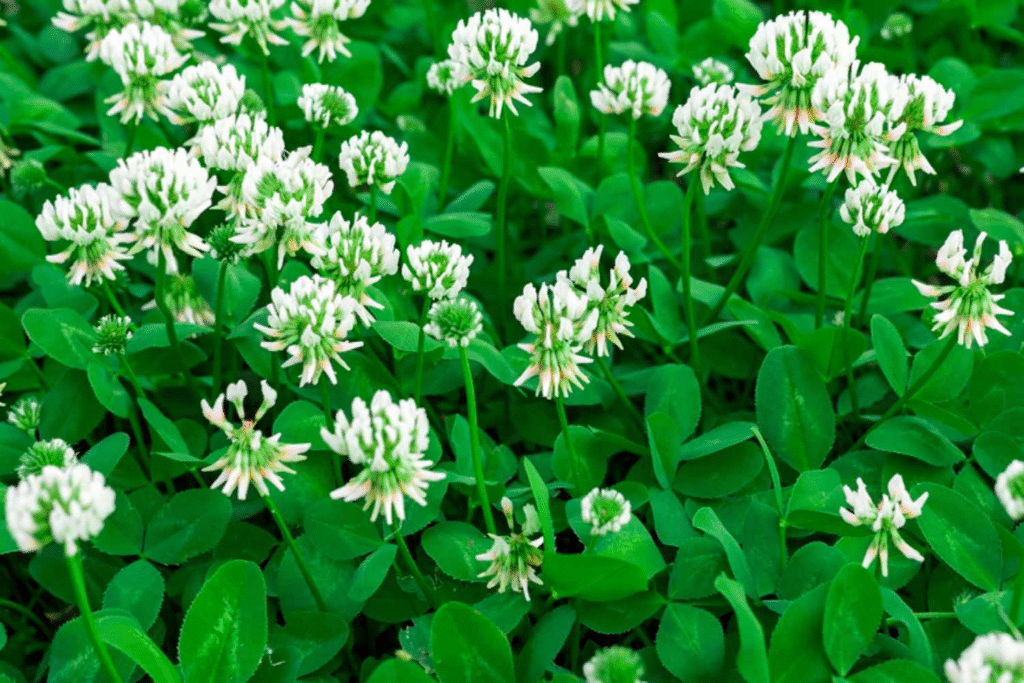
White clover produces attractive white flowers and is the most well-known and widely used clover variety in the United States. It spreads rapidly, thrives even in poor soil conditions, and effectively outcompetes most common lawn weeds. This versatile clover grows successfully in USDA hardiness zones 3-10, making it suitable for most regions across the country.
White clover is the most commonly found clover in lawns, thriving in USDA zones 3-10. Like other clover varieties, it’s a vigorous cool-season grower that can spread 12 inches or more, creating dense ground coverage.
Microclover (Trifolium repens L)

Microclover is an excellent choice for homeowners who want to transition away from traditional grass but still maintain a tidy, manicured lawn appearance. This variety offers all the environmental benefits of Dutch white clover but in a smaller form that better tolerates low mowing heights. Microclover grows to only 4-6 inches tall at maturity and has a particularly dense growth habit.
For those interested in a mixed lawn approach, microclover is the best variety to integrate with existing turf grass. It handles frequent mowing well and creates a more uniform appearance while still providing the nitrogen-fixing benefits that feed the grass and eliminate the need for additional fertilizer.
Red Clover (Trifolium pratense)
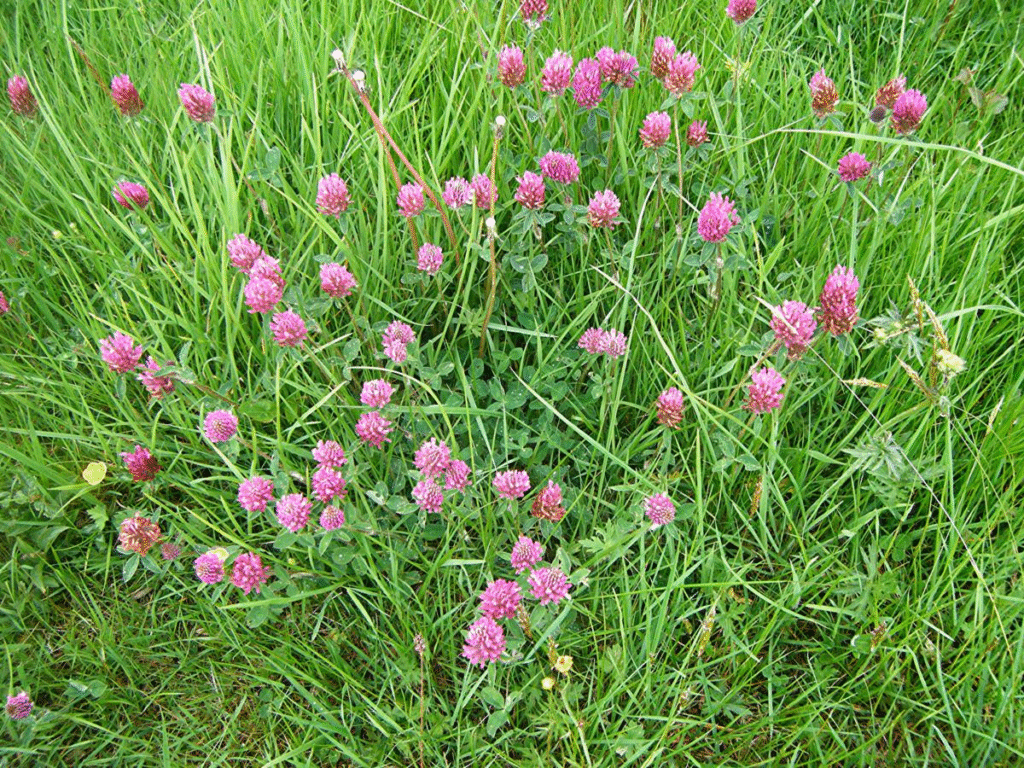
Red clover stands out with its distinctive reddish-purple flowers and can grow up to 24 inches tall. It provides essential nutrients including calcium, niacin, potassium, and vitamin C, and is often valued for its natural health benefits. While not typically used as a primary lawn cover, red clover excels as a nitrogen-fixing cover crop and may be the ideal choice for lawns with particularly poor soil. This variety performs best in USDA zones 4-8 and pairs well with Bermuda grass, tall fescue, perennial ryegrass, white clover, and sweet clover.
Strawberry Clover (Trifolium fragiferum)
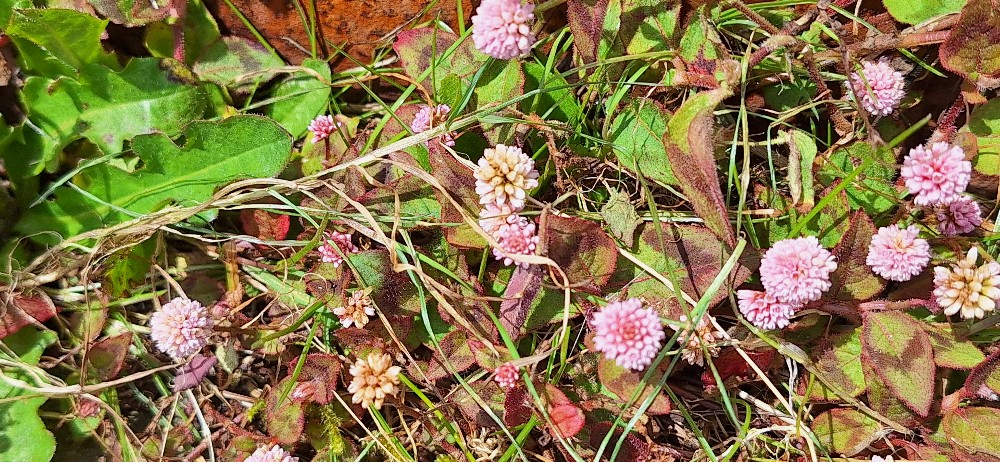
Strawberry clover is another option for lawn applications, joining white and red clover as the three main types used for this purpose. All clover varieties are vigorous cool-season growers with significant spreading capacity.
Creating Your Clover Lawn: Planting & Establishment
Whether you’re starting fresh or converting an existing lawn, establishing clover is a straightforward process:
When to Plant
Clover grows best in cooler conditions, making spring or fall the optimal planting times. Fall planting typically yields the most successful establishment, though spring planting can also work well in many regions.
For most areas, the ideal seeding window is from mid-March to mid-April when soil temperatures have warmed but before summer heat arrives.
Preparation & Seeding Methods
For a new clover lawn:
- Clear the area of existing vegetation and debris
- Loosen the top layer of soil with a rake
- Test soil pH (clover prefers slightly alkaline conditions)
- Level the area for proper drainage
When seeding, spread approximately 6-8 ounces of clover seed per 1,000 square feet. Use a light roller or rake to gently press the seeds into the soil. Clover doesn’t need to be planted deeply—simply sprinkling or lightly raking the seeds into the soil surface is sufficient.
For shady areas, use twice the normal amount of seed to promote full, dense growth.
Overseeding Existing Lawns
One of the greatest advantages of clover is that you can easily plant it over your existing lawn without removing the grass. This overseeding approach allows you to maintain some traditional turf while gaining the benefits of clover. Simply spread clover seed across your current lawn in spring or fall, and it will establish itself amongst the grass.
When mixing clover with existing grass, reseed your lawn in the fall with clover seed instead of grass seed. The clover will add nitrogen to the soil and naturally feed the grass, eliminating the need for additional fertilizer applications.
Watering for Establishment
Water seeded areas thoroughly after planting and keep the soil consistently moist until germination occurs. Clover typically takes between 7-21 days to germinate. After the clover becomes established, you can significantly reduce watering frequency compared to traditional grass.
During the germination period, mist the seeded area with water daily until you see the clover sprouting.
Clover Lawn Maintenance: Less Work, More Benefits
One of the main attractions of clover lawns is their minimal maintenance requirements:
Mowing Requirements
Unlike conventional turfgrass lawns that need weekly or bi-weekly mowing, a clover lawn typically only requires mowing twice per year. Most clover varieties grow to a height of 2 to 8 inches tall. The recommended mowing schedule includes once in midsummer after the clover has bloomed and dropped its seeds, and again four to six weeks before the first fall frost. Any additional mowing is completely optional and based on aesthetic preferences.
This dramatic reduction in mowing frequency is one of the biggest differences between clover lawns and traditional grass lawns. For those who don’t enjoy mowing as a lawn chore, clover offers a significant advantage.
If you prefer to maintain a more manicured appearance:
- Set mower blades to a height of 1.5-2 inches
- Mow less frequently than you would grass
- Consider a manual reel mower for small clover areas
Watering Needs
A clover lawn generally doesn’t need supplemental watering except during its initial establishment phase. Its deep root system allows it to draw moisture from far below the soil surface, making it naturally drought-resistant.
These fibrous root systems extend deeper than many people expect—sometimes reaching up to 2 feet into the soil. These extensive roots not only help the plant access deep soil moisture but also keep soil and nutrients intact through heavy wind, rain, and other environmental challenges.
Thanks to its robust root system and dense growth habit, clover can remain green and lush even during the hottest, driest summer conditions when traditional lawns turn brown and dormant. This resilience means little to no supplemental watering is needed once your clover is established, saving both time and money on irrigation costs.
Fertilization
Due to clover’s natural nitrogen-fixing abilities, it effectively self-fertilizes and provides nutrients to surrounding plants. This remarkable characteristic eliminates the need for synthetic fertilizers that can harm the environment.
Clover often naturally moves into areas with poor soil because it has the ability to heal nitrogen-deficient ground. Through a biological process, it captures nitrogen from the air, converts it to a plant-friendly form, and releases it into the soil, functioning as a natural fertilization system.
Weed Control
One of clover’s most valuable attributes is its resilience and ability to naturally suppress weeds. Its strength and dense growth habit effectively smother most common lawn weeds, creating a naturally weed-resistant surface that requires no herbicide applications.
Clover’s fast spread and competitive growth make it easy for it to outcompete harmful weeds, significantly reducing the time, energy, and money needed for weed management. This natural weed suppression allows you to maintain a beautiful yard without the environmental costs and health concerns associated with herbicide use.
Potential Challenges of Clover Lawns
While clover offers numerous benefits, it’s important to consider a few potential drawbacks:
Durability and Foot Traffic
Most clover varieties are not as durable as traditional grass and can become worn down under heavy foot traffic. If your household includes children or pets that spend substantial time playing on the lawn, you might need to either avoid pure clover or consider mixing clover with a traditional turf grass for better durability.
Pure clover lawns are generally recommended only for areas that experience light foot traffic. For more active spaces, a grass-clover mix can provide many of clover’s benefits while maintaining better durability against heavy use.
Attracting Pollinators
An important consideration is that clover attracts honeybees and other pollinating insects. While this provides significant ecological benefits by supporting important pollinators, it might be a concern for households with young children or individuals with bee allergies.
If bee attraction is a concern because children play on the lawn or you prefer to walk barefoot, consider planting microclover, which produces fewer flowers while still offering most of clover’s benefits. It’s worth noting, however, that mowing the clover lawn before or when flowers bloom to discourage bees somewhat defeats one of the main ecological purposes of a clover lawn—providing food sources for beneficial pollinators.
Longevity and Reseeding
Clover is classified as a short-lived perennial, meaning it won’t permanently return year after year indefinitely. You may find it necessary to replant your clover lawn every two to three years to maintain optimal coverage. Fortunately, clover seed is relatively inexpensive, and the plant spreads quickly once established.
If you opt for a full clover lawn, you’ll likely need to refresh it with new seed every few years. However, when clover is mixed with other grasses, it typically reseeds itself naturally, eliminating the need for manual reseeding.
Spreading Beyond Boundaries
Clover can sometimes grow into unwanted areas like sidewalks, garden beds, or driveway cracks. Its aggressive spreading habit, while beneficial for lawn coverage, may require some management to keep it contained within desired boundaries.
Making the Decision: Is a Clover Lawn Right for You?
The decision to plant a clover lawn versus a traditional grass lawn ultimately depends on your priorities and preferences. If you’re seeking a low-maintenance, environmentally friendly option that improves soil fertility, conserves water, and supports pollinators, a clover lawn represents an excellent choice. However, if you prefer a more conventional lawn appearance or have concerns about attracting bees, a traditional grass lawn might better suit your needs.
For many homeowners, the optimal solution may be a mixed lawn that incorporates both clover and grass:
If you already have clover patches appearing in your yard, you can encourage their growth by avoiding broadleaf weed killers and adjusting your mowing height to between 1.5-2 inches, which favors clover development while being somewhat lower than ideal for most traditional grasses.
Conclusion: Embracing the Clover Revolution
As environmental awareness grows and water conservation becomes increasingly important, clover lawns offer a compelling alternative to traditional grass. Their minimal maintenance requirements, natural fertilization capabilities, and ecological benefits make them well-suited for today’s eco-conscious homeowner.
Whether you choose to create a pure clover lawn, integrate clover into your existing grass, or start with small clover patches, this resilient plant can transform your outdoor space into a more sustainable, beautiful, and beneficial landscape. By embracing clover, you’re not just creating an attractive lawn—you’re contributing to environmental health through reduced water usage, eliminated chemical inputs, and enhanced support for vital pollinator populations.
